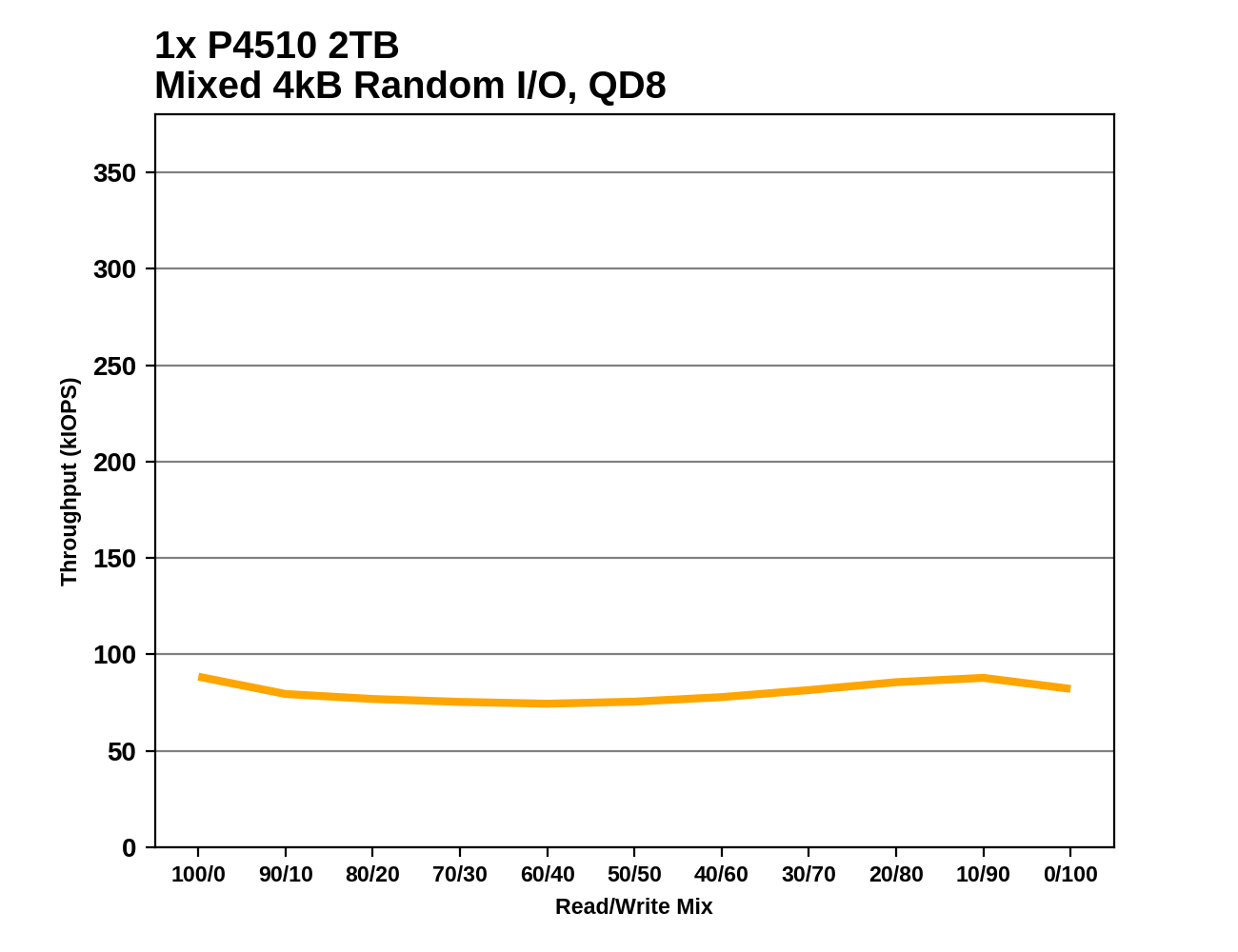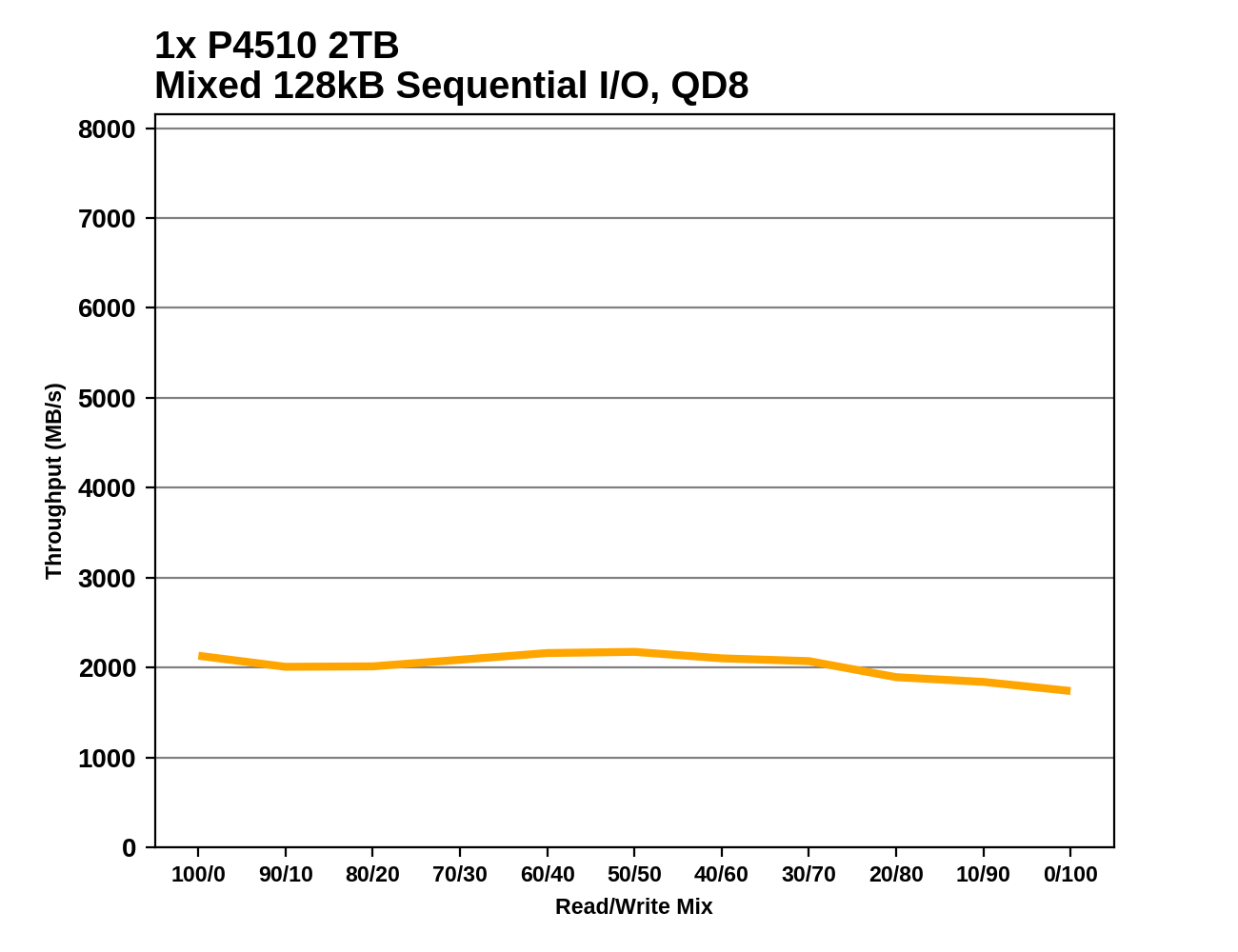The Intel SSD DC P4510 SSD Review Part 1: Virtual RAID On CPU (VROC) Scalability
by Billy Tallis on February 15, 2018 3:00 PM EST- Posted in
- SSDs
- Storage
- Intel
- RAID
- Enterprise SSDs
- NVMe
- U.2
- Purley
- Skylake-SP
- VROC
Mixed Random Performance
Our test of mixed random reads and writes covers mixes varying from pure reads to pure writes at 10% increments. Each mix is tested for four minutes, with the first minute excluded from the statistics. The test is conducted with eight worker threads and total queue depths of 8, 64 and 512. This test is conducted immediately after the random write test, so the drives have been thoroughly preconditioned with random writes across the entire drive or array.
 |
||||||||||
| QD 8 | ||||||||||
| QD 64 | ||||||||||
| QD 512 | ||||||||||
At the relatively low queue depth of 8, the individual P4510 drives show fairly flat performance across the varied mixes of reads and writes. The RAID configurations help a little bit with the random read performance, but have a much bigger effect on write throughput.
Mixed Sequential Performance
Our test of mixed sequential reads and writes differs from the mixed random I/O test by performing 128kB sequential accesses rather than 4kB accesses at random locations. The highest queue depth tested here is 256. The range of mixes tested is the same, and the timing of the sub-tests are also the same as above. This test was conducted immediately after the sequential write test, so the drives had been preconditioned with sequential writes over their entire span.
 |
||||||||||
| QD 8 | ||||||||||
| QD 64 | ||||||||||
| QD 256 | ||||||||||
At QD8, the single 2TB P4510 again has fairly flat performance across the range of mixes, but the 8TB model picks up speed as the proportion of writes increases. The four-drive RAID-0 shows strong increases in performance as the mix becomes more write heavy, and the two-drive RAID-0 shows a similar but smaller effect over most of the test.
At QD64 and QD256, the huge difference in write performance between the four-drive RAID-0 and RAID-10 configurations is apparent. The configurations with a PCIe x8 bottleneck show entirely different behavior, peaking in the middle of the test when they are able to take advantage of the full-duplex nature of PCIe, and slowest at either end of the test when one-way traffic saturates the link. For even balances of reads and writes, the PCIe x8 bottleneck barely affects overall throughput.










21 Comments
View All Comments
ckrt - Tuesday, February 20, 2018 - link
that and the other way around... virtualization for aggregation... with those 32 rulers adding up to a PETABYTE of storage and some neat high performance computing nodes using submerged liquid cooling, you can have the equivalent of a full small or medium business datacenter in just one 42u rack... man!... the posibilities!